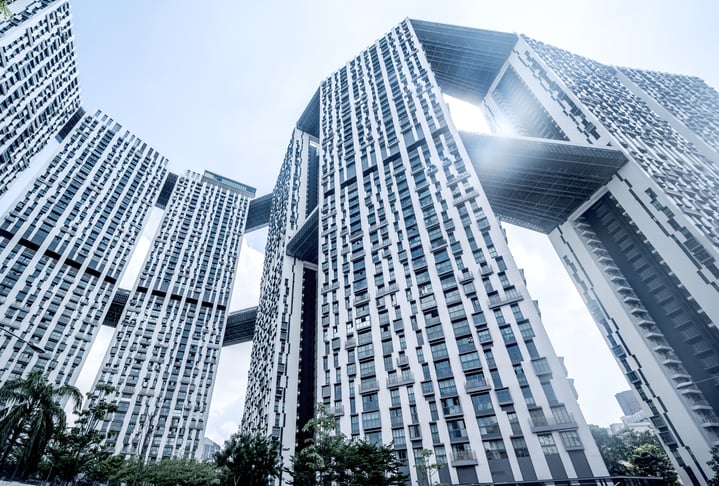In real estate, location is everything. But is it worth shelling tens of thousands more for prime location in a highly accessible country like Singapore?
We examine the main reasons that drive property prices in different parts of the island to help figure out if an area makes sense for you.

Come 2030, Singapore will become more accessible thanks to the introduction of two new MRT lines. The Thomson Line and the Downtown Line are set to become game-changers in the public transport offerings of our island because it means that residents will be conveniently sited closer to transport links.
According to the Land Transport Authority Master Plan 2040, 80% of households will be within a 10-minute walk from an MRT station, with 85% of public transport journeys under 20km taking under an hour.
Property analysts have even indicated that it would not matter any more if residents live near the country’s Downtown Core, given the decentralisation of central business hubs in Singapore.
However, there remain some crucial points that affect the price and intangible value of a property’s prime location.
Even as the government’s measures to curb property speculation and stabilise housing prices are in place, homes in the Core Central Region and Outside Central Region continue to cost more.
A quick check on 99.co shows the average price for a 4-room HDB flat in Toa Payoh (located in the Rest of Central Region) is currently S$655,465, while the average price of a similar unit in Yishun (located in the Outside Central Region) is S$457,319. That’s almost a S$200,000 difference!
Which brings us to the question: Does the old adage — prime location is the key in real estate — ring true even in modern times?
We think there could be two main reasons for the price skew in favour of the Core Region:
Amenities & convenience
The factors that contribute to the higher premiums for homes in the central region include the concentration of high-end private housing and the proximity to anchor commercial and business amenities.
Even public housing sites near the Central Region, such as Toa Payoh, Bishan and Queenstown (technically referred to as Rest of Central Region), are sold at above median prices because of their accessibility to the rest of the island.
Amenities attracting most home-buyers to these areas include a well-established network of malls, family entertainment facilities and a great public transport network.
Prestige
There is also the perceived prestige of living in the prime location of the Central Region, as these neighbourhoods are mature and considered more developed to include comprehensive amenities and facilities. The fact that these housing estates are located near private housing also contributes to its perceived value and luxury cachet.
Even as Singapore becomes more accessible, prices for property located in the Core Central Region will continue to fetch a higher premium than those located further away because of the esteem associated with owning a property in the prime districts of Singapore.
This prime location includes neighbourhoods located near Bukit Timah Road, Holland Road, Farrer Road, Orchard Road and River Valley Road – basically what real estate insiders refer to as Districts 9, 10 and 11. Sentosa and the Downtown Core are also included in the Urban Redevelopment Authority’s definition of the Core Central Region.
This brings us back to the point of Singapore’s increasing accessibility
If the entire country is conveniently accessible by public transport, then wouldn’t homebuyers be less particular about purchasing homes located further away from the Central Region? By doing so, they would be able to save a significant amount of money.
Based on the market trends, although there has been a great pickup in the prices of areas like Punggol and Jurong, the lure of the Core Region is hard to beat for property investors looking for more bang for their investment buck.
We think that the demand for homes in the Central Region is unlikely to wane.
This is because when buying homes, people are driven by factors other than price and accessibility. Intangible values such as being close to family and friends, as well as the prestige of living in a ‘good’ neighbourhood come into play.
More concretely, where you live in Singapore actually plays an important role in where your children go to school, thanks to the Ministry of Education’s Home-School Distance Category allocation.
But let’s not forget that the property landscape in Singapore allows for homeowners to upgrade their homes by getting handsome returns on your existing property when you decide to cash out and upgrade to a bigger apartment.
So if you are a young family looking for a means to save some money, then perhaps choosing a more affordable home for the time being is the way to go.
While prime location is still everything, Singapore is getting more connected, and it becomes a little less of a deal-breaker. The new train lines will ensure that you are never far from a party hotspot or fine dining enclaves – every zone will be a great location!
Still not convinced? Let us know in the comments section below or on our Facebook post.
If you found this article helpful, check out Which HDB towns have seen the biggest rise in flat values? and Top 5 HDB towns with the highest price appreciation.
Looking for a property? Find the home of your dreams today on Singapore’s fastest-growing property portal 99.co! If you would like to estimate the potential value of your property, check out 99.co’s Property Value Tool for free. Also, don’t forget to join our Facebook community page or Telegram chat group! Meanwhile, if you have an interesting property-related story to share with us, drop us a message here — and we’ll review it and get back to you.
The post Does prime location of a property still matter for buyers? appeared first on 99.co.

